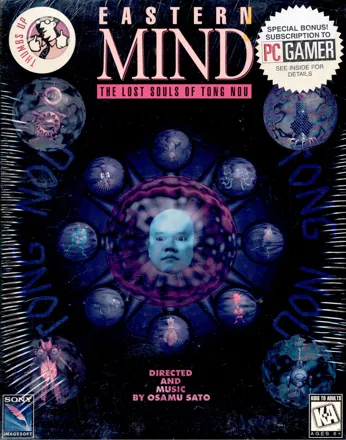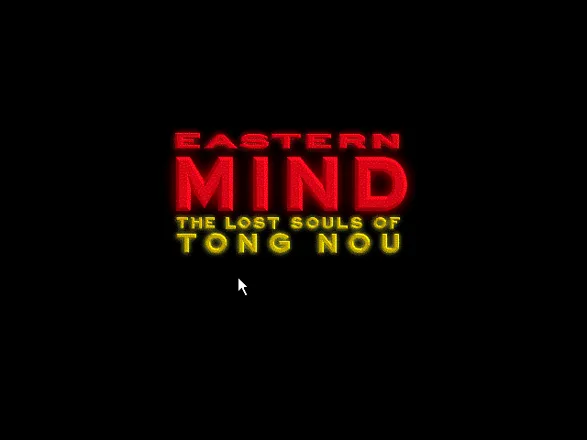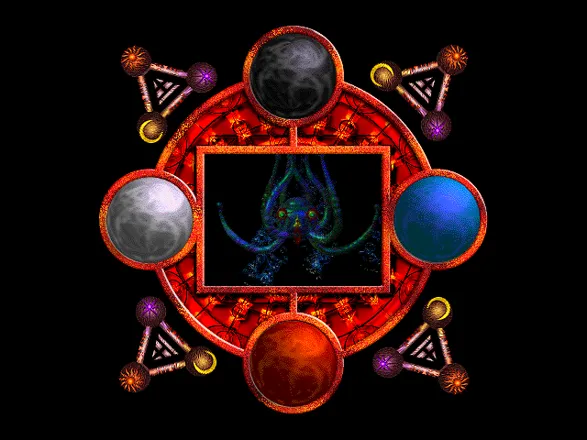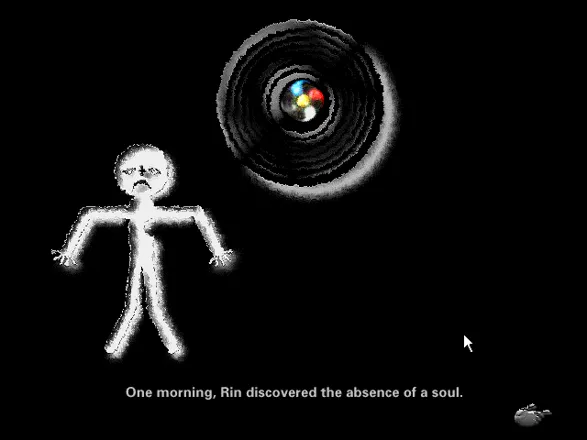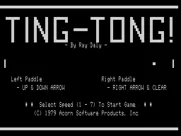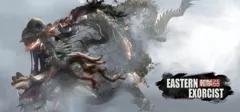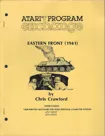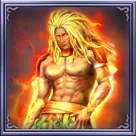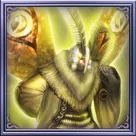Eastern Mind: The Lost Souls of Tong Nou
Description official description
Eastern Mind: The Lost Souls of Tong Nou is an inventory-based point-and-click adventure game.
The player taking the role of Rin, is a young man who has lost his soul. With a temporary soul from a friend that will keep Rin alive for 49 hours, Rin travels to the living island of Tong Nou to recover his soul. Tong Nou is a strange, living island, that takes the shape of a giant green head (actually the one of the designers Osamu Sato).
There, Rin will visit the five lands that were created when the universe was born: the Lands of Time, Desire, Dreaming, Life, and the Central Mountain of Tong Nou. Rin will revisit these lands often during the game. To solve the quest, the player may even have to die and reincarnate nine times, causing the player to play the game from the perspective of nine different characters. To complete the game, the player has to accomplish the goals of each character.
Spellings
- 東脳 - Japanese spelling
Groups +
Screenshots
Credits (Macintosh version)
31 People (27 developers, 4 thanks) · View all
| Directed by |
|
| Music by |
|
| Produce |
|
| A&R Direction | |
| Co-Produce | |
| Executive Producer | |
| Art Direction |
|
| CG Design |
|
| Game Design |
|
| Character Design |
|
| Original Story |
|
| Scenario |
|
| 3D Modeling |
|
| Technical Direction |
|
| Main Programming |
|
| Opening CG | |
| Programming Adviser | |
| Digital Entertainment Program Produced by | |
| [ full credits ] | |
Reviews
Critics
Average score: 77% (based on 3 ratings)
Players
Average score: 3.6 out of 5 (based on 2 ratings with 1 reviews)
An excellent premise, maybe not executed as well as it could've been
The Good
If you're looking for your standard, run-of-the-mill point-and-click Myst clone, you're in the wrong place. This game has a hell of a lot more to offer than most others of the time period. It was created by the same man who was the creative mind behind the cult classic LSD: Dream Emulator for PS1, famed for its trippy and disturbing content. That should tell you a lot about what to expect from this.
Most people, when seeing the game for the first time, take one look at the visual style and instantly attribute it to the designer having taken too much marijuana, cocaine or any one of several mind-altering substances, which, to be fair, was the first impression I got of it; as we all know, first impressions mean a lot to a person who plays games. At the time, I suppose, games were a little more experimental with their content, and designers could make strange games like this without them being denied by the publishers. In this day and age, Eastern Mind would probably be that one odd indie game you see popping up here and there, but you think it looks a little gaudy and you're not sure what the hubbub is about. Imagine Osamu Sato pitching this to Sony nowadays: "Hey, yeah, I wanna make a game about my disembodied green head." It just wouldn't happen. This is why I'm thankful for the '90s - without them, games like this wouldn't have come about.
The game's world, mythologies and philosophies are the main pluses for me. Upon first glance, the game does look like the result of a bad trip, but once you start paying attention to what the characters are saying, and once you've read the Illustrated Book item from cover to cover, you'll start to understand that the game is far much more than meets the eye. It's kinda like one of those trips where you have an epiphany halfway through, and you spend the rest of it having an existential crisis. (Disclaimer: I've never done drugs.) The entire thing is based around every life having a purpose and dying and getting reincarnated to contribute to life's bigger scheme in order to regain the soul that Tong-Nou has taken from you. Once you've got yourself into the Eastern Mind, so to speak, and you start to understand the world, the game's convoluted and sometimes cryptic missions become a lot more straightforward and you begin to understand what the game demands of you, and are able to fulfill these demands.
Aside from the mythos surrounding it, the world itself is visually quite impressive - especially considering this is an early Windows game, which could, to my knowledge, only support 256-colour graphics; this game seems to utilise all 256 and more. It's a very pretty game. The worlds themselves all have clear themes (being based on the five elements of Chinese mythology - Water, Fire, Earth, Metal and Wood), and the colourful (although possibly far too energetic - I'll get onto that later) characters add life to the already vibrant environments. Osamu Sato's very unique visual (and, indeed, auditory) style really shines through in this game. Can you think of any other game that looks and feels the same as Eastern Mind?
Speaking of audio, the game's music is definitely atmospheric. Each area has a distinctive theme, and no two pieces sound the same. The opening and ending themes are also two very cool pieces of music. The game's "soundtrack" was also released as an album called "Transmigration", which, although it isn't really much of a soundtrack per se, it still apparently seems to be related to the game and it contains a lot of really interesting experimental electronic stuff. Definitely worth a listen if you're into Osamu Sato's stuff. Still worth a listen if you're interested in fairly obscure electronic music, too.
The Bad
While I think this game is awesome, there are still some flaws that need to be addressed, as there is with any game. Most of it seems to be down to laziness on the developers' parts, because the game still feels like an unfinished beta version.
The first, most obvious flaw is that the character animations play /way too fucking fast/. Every single character looks like they're perpetually flipping out about something. I'm almost certain this wasn't an artistic manoeuvre by Mr. Sato, because I've played the sequel, Chu-Teng, which is much more smoothly animated.
The second thing that feels unfinished is that half of Rin's reincarnations don't take all that long to finish. Whilst four out of eight of them have fairly long and lateral puzzles to solve before they can be reincarnated, the other four are just "Keep clicking. Something's gonna happen soon." Then it happens, and you don't really feel like you've actually accomplished anything. It might've been some kind of profound statement, like, "Even if you don't do much, your life will contribute to the bigger scheme of things. Somehow." But personally, I just think Sato was either running out of ideas or got a little bored. Either way, it drags down the completion time, and that leaves me feeling a little empty. Where's the 40-50 hours of gameplay I was promised by the back of the box?
The final flaw I need to address, which isn't really a flaw at all, rather a personal gripe, is that some of the music is kind of bland and repetitive. The game's entire soundtrack (sans the opening/ending themes) consists of nothing but 5-second loops. From a musician of his calibre, I expected something a little better from Mr. Sato.
In short, had the animations been done better, if half of the missions were longer, and if there was a better musical score behind it, I think Eastern Mind's story and world would've been much more well-executed and it would've been a much better game overall.
The Bottom Line
Personally I think I've spoken enough about this game. It's a great game, and I love it. I've not played Myst or any other so-called "Myst clones", but as it stands, as monotonous and back-tracky as it is, Eastern Mind is definitely worth playing. If you take the time to see past the "lel how much weed do u have to smoke to come up with this shit", you'll discover a hidden gem.
You might not think the same way as I do, even after having played it, but in my opinion it was much better than I was expecting - it should definitely be more recognised than LSD: Dream Emulator.
Windows 3.x · by Munckeyz (4) · 2013
Analytics
Upgrade to MobyPro to view research rankings!
Related Sites +
-
Eastern Mind Tips & Tricks
from Four Fat Chicks
Identifiers +
Contribute
Are you familiar with this game? Help document and preserve this entry in video game history! If your contribution is approved, you will earn points and be credited as a contributor.
Contributors to this Entry
Game added by game nostalgia.
Macintosh added by Kabushi.
Additional contributors: Jeanne, Munckeyz.
Game added April 12, 2006. Last modified February 22, 2023.
